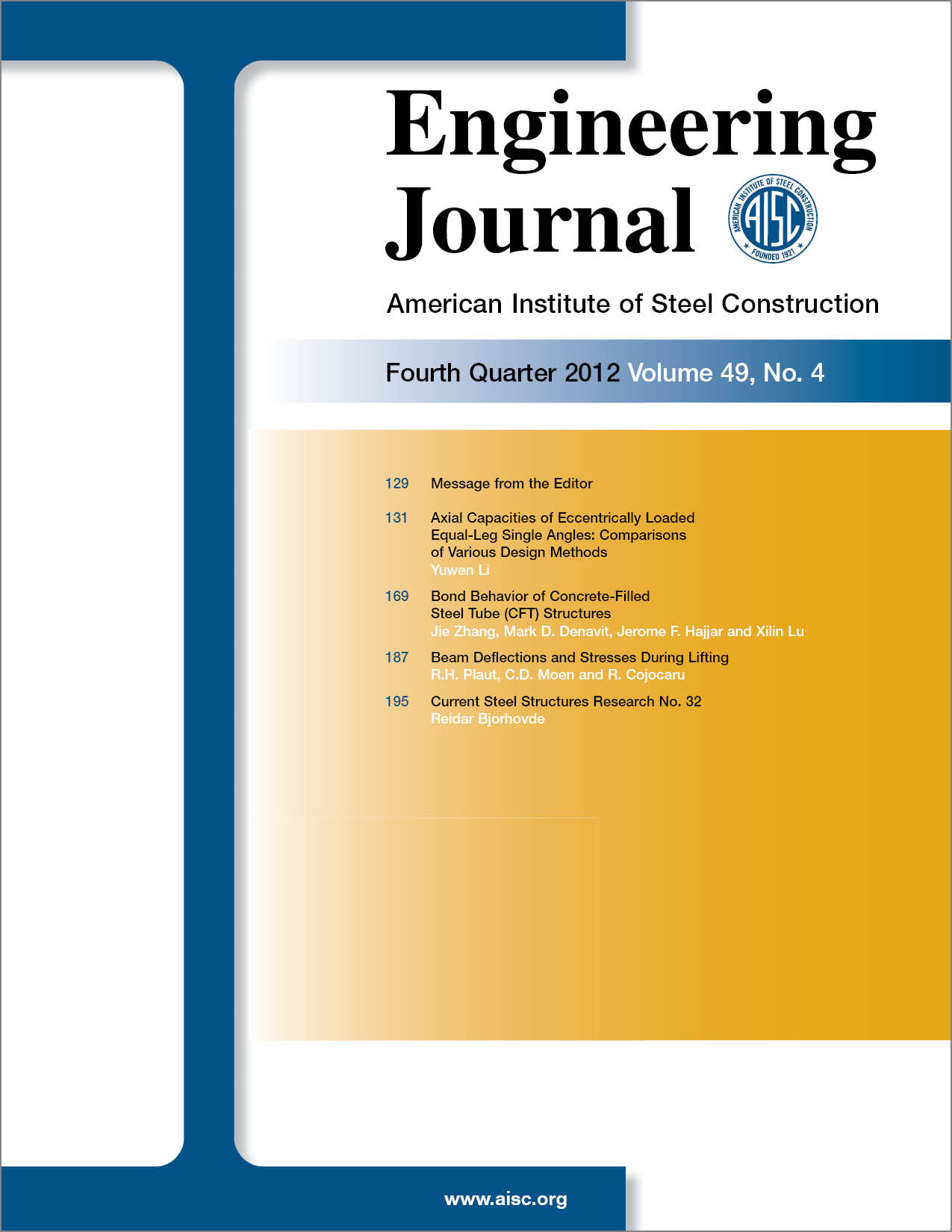Bond Behavior of Concrete-Filled Steel Tube (CFT) Strucutres
DOI:
https://doi.org/10.62913/engj.v49i4.1034Keywords:
concrete-filled steel tubes, composite action, connections, bond strength, critical bond stress, slipAbstract
To achieve internal force transfer while avoiding the use of steel stud anchors or a bearing mechanism within concrete-filled steel tubes (CFTs), an accurate assessment of the bond strength of CFTs is required. However, calculation of the bond within CFTs remains a challenging problem due to lack of a general procedure that can account for the range of connection configurations seen within composite construction. A new approach for assessing the nominal bond strength for both rectangular and circular CFTs is proposed. Based on the results of push-out experiments of CFTs, the nominal bond stress is shown to vary with tube shape and dimensions, and formulas are proposed to capture this behavior. The longitudinal bond transfer length is derived by examining the distribution of bond stress along the height of the column as well as experimental data from CFT connection tests. The circumferential bond transfer width is identified as the entire perimeter of the interface, accounting for the contribution to the bond strength from the interface on the sides that do not have girders or braces framing in. The resulting nominal bond strength is then shown to have a resistance factor of 0.45 for load and resistance factor design (LRFD) and safety factor of 3.33 for allowable strength design (ASD).

